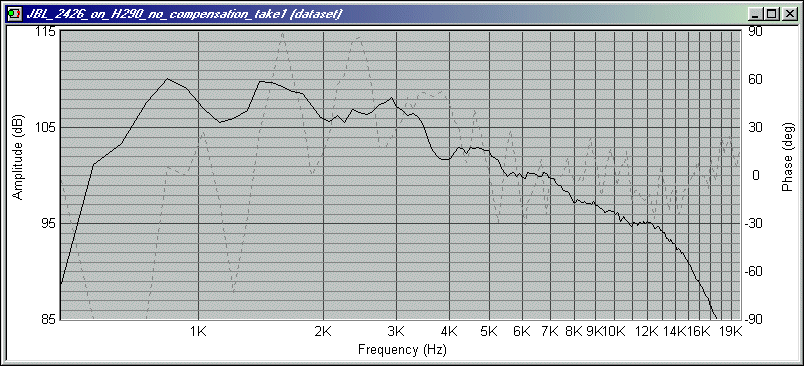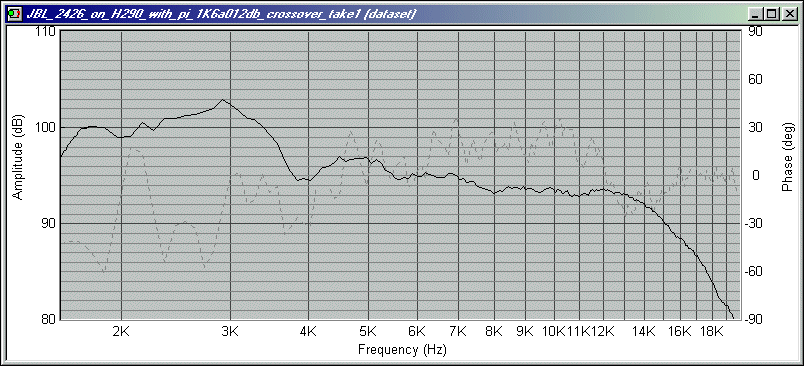| Re: Driver selections [message #66770 is a reply to message #66769] |
Sat, 26 March 2011 18:31   |
 |
 Wayne Parham
Wayne Parham
Messages: 18987
Registered: January 2001
|
Illuminati (33rd Degree) |
|
|
The horn used is the H290. That's what the design is optimized for. Measurements of the speaker are at the following link:
Speakers with JBL 2426 drivers are often advertised to go out to 16kHz - and they do - but it's with gentle rolloff. I've also seen some designs that boost the top-octave with peaking coils to bump up the response at 16kHz. Either way, you're dealing with a pretty good driver, but one that should only be expected to reach 14kHz or maybe 16kHz with an extra peaking circuit.
Here are some measurements (pay attention only to 4kHz upwards because of the conditions of the test):
 JBL 2426 on H290 without top-octave compensation
JBL 2426 on H290 without top-octave compensation
That's actually a very nice curve for a compression driver. The downward trend you see is typical, a textbook-case 6dB/octave slope from mass-rolloff. The thing is, at 12kHz or 13kHz, the next filter function kicks in, that of voice coil inductance. That's the beginning of the end for this driver.
 JBL 2426 on H290 with π top-octave compensation
JBL 2426 on H290 with π top-octave compensation
Here we see the response with the crossover providing 6dB/octave boost to counter for mass-rolloff. That makes it nice and flat up to 12kHz or so, but then it starts rolling off.
You can read more about compression drivers and why they act this way in the whitepaper below. It's written to help the reader understand speakers like these, the crossovers, horns and drivers in them, and why we make the design choices that we do.
When I use the JBL 2426, I use the same basic crossover design I use with all my other speakers. You could use a peaking coil tuned to 14kHz or so to boost another 6dB/octave up there. But even with the added complexity of the extra peaking circuit, you only gain a smidge more high end, like maybe 2kHz. You push the upper -3dB point from 14kHz to maybe 16kHz. It's dropping like a rock up there, and I don't see much benefit in pushing the power to the driver trying to eek out that extra air. It's just not worth it to me.
Don't misjudge the sound quality by what you see in the graphs. The 2426 sounds very good, even with the rolloff at 14kHz. Personally, I prefer the sound of the 2426 with mass-rolloff compensation and without any extra boost. I've tried it both ways, and with the extra boost, I think the driver sounds artificial. It sounds very effortless and smooth with the stock crossover, and has plenty of sparkle.
On the other hand, if you don't already own the driver, I wouldn't spend $300 to get it, I'd go with the DE250 instead. I think it is an even better driver, and doesn't cost as much. That's why I stopped using the 2426 and went with the DE250. It's very smooth, has better extension and costs less.
|
|
|
|







